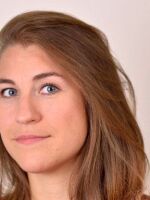Updated May 7, 2025 at 7:03 AM CDT
VATICAN CITY — As more than a billion Catholics around the world await the election of a new pope, all eyes are on the Sistine Chapel, where 133 cardinals are about to begin the secretive process known as a conclave.
Throughout the week, pilgrims and journalists have flocked to St. Peter's Square, as cardinals held closed-door meetings to discuss church issues and the qualities they want to see in the next pope. The pilgrims sing sacred hymns, while the journalists try to corner cardinals for clues about their papal preferences.
The conclave was set in motion by the death of Pope Francis on April 21 at age 88. Francis himself was elected in 2013, when he became the first-ever pope from Latin America. There's been more than a week of services in memory of Francis. And now, the task to select his successor commences.
On Wednesday, cardinals, bishops, nuns and the faithful gathered inside St Peter's Basilica for a Mass, ahead of the start of the conclave to choose a new pope.
The cardinals in their red robes — which signify the willingness to sacrifice their lives for the church — processed up the aisle of the crowded St. Peter's Basilica, passing the bishops in purple robes and stopping briefly at the altar to pray. Smoke from burning frankincense curled up toward the golden cupola. The air filled with music from a choir as they led the congregation in prayerful song.
"We are here to invoke the help of the Holy Spirit," said Giovanni Battista Re, the dean of the College of Cardinals, in his homily, "so that the pope elected may be he whom the church and humanity need at this difficult and complex turning point in history."
The 92-year-old Re called for a pope that can "awaken the consciences of all and the moral and spiritual energies in today's society, characterized by great technological progress but which tends to forget God."
From there, the cardinals will proceed to the Sistine Chapel, where under Michelangelo's famous frescoes they will hear sermons and then begin voting.
Until they elect a new pope — signaled by plumes of white smoke streaming from a chimney atop the Sistine Chapel — the cardinals are sequestered inside Vatican City. Outside the chapel, the Pontifical Swiss Guard stands watch.
Conclave begins with oaths of secrecy
The rituals take place according to rules popes have refined over the centuries, clarifying the time frame and obligations. But the conclave itself must be obscured by "total secrecy," as Pope John Paul II wrote. Cardinal electors must sign an oath of secrecy and seclusion, under threat of excommunication.
That's why the process intrigues so many people, says Gregg Gassman, a librarian who edits the Pontifacts podcast.
"Some of the mystery does come from the closed nature of the conclave itself," he says. "It's fascinating."
Loading...
The conclave begins voting
"There's only one round that first evening, and then you will see black smoke or white smoke," says Kurt Martens, ordinary professor of canon law at the School of Canon Law at the Catholic University of America.
Typically, he says, the first round is merely an indication of the cardinals' priorities. On the following day, the conclave starts holding two rounds of voting each morning and another two in the afternoon.
After each vote, a needle is pushed through the ballots, binding them together. If no winner emerges with a two-thirds majority, the two packages are "put together in that stove that is in the corner of the Sistine Chapel, to burn them and produce whatever smoke needs to be produced — white or black," Martens says.
The church once used wet straw or dry straw to produce the right color, but to avoid confusion, the process now relies on chemicals.
The cardinals will continue to pray and contemplate — and vote — until a new pope is elected.
How long do conclaves last?
"All of the conclaves from the 1900s onwards have been under four days," says Bry Jensen, host of Pontifacts.
After a successful vote, the winning candidate is asked two questions. The first is whether he accepts his election as pope.
"And then the second question is going to be, 'What name do you choose?' And then the name is chosen," Martens says.
Before Pope Francis was elected, many of the faithful in Buenos Aires, Argentina, knew their archbishop as simply Father Jorge, as NPR reported in 2013.
Official documents are filled out, and the new pope is taken into a sacristy, to be fitted with papal attire.
"There are typically three sets of vestments ready," in sizes roughly equal to small, medium and large, Martens says.
Soon afterward, the senior cardinal deacon will appear on the balcony over St. Peter's Square, announcing, "Habemus Papam!" — "We have a pope!"
It will then be the new pope's turn to emerge onto the balcony and deliver his first blessing.
Bill Chappell reported from Washington, D.C.
Copyright 2025 NPR



